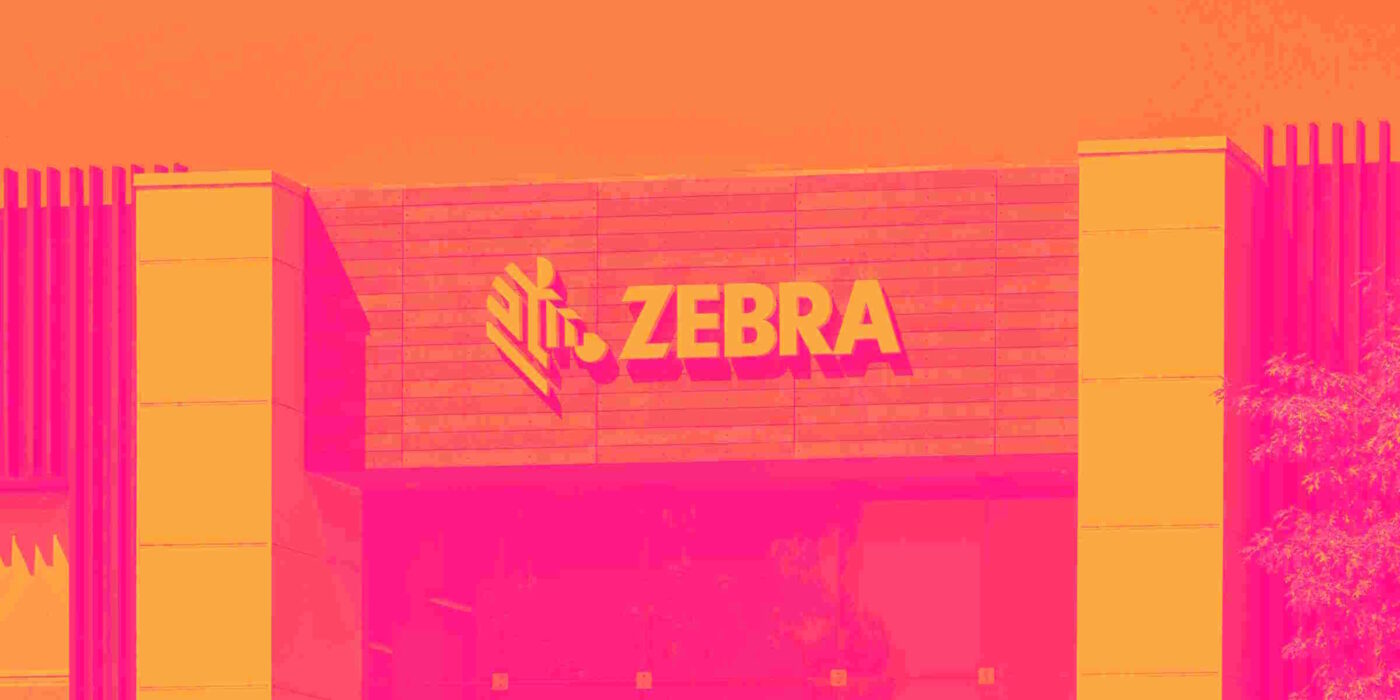
Enterprise data capture company Zebra Technologies (NASDAQ: ZBRA) met Wall Street’s revenue expectations in Q2 CY2025, with sales up 6.2% year on year to $1.29 billion. The company expects next quarter’s revenue to be around $1.31 billion, coming in 0.7% above analysts’ estimates. Its non-GAAP profit of $3.61 per share was 8.4% above analysts’ consensus estimates.
Is now the time to buy Zebra? Find out by accessing our full research report, it’s free.
Zebra (ZBRA) Q2 CY2025 Highlights:
- Revenue: $1.29 billion vs analyst estimates of $1.29 billion (6.2% year-on-year growth, in line)
- Adjusted EPS: $3.61 vs analyst estimates of $3.33 (8.4% beat)
- Adjusted EBITDA: $267 million vs analyst estimates of $249.3 million (20.6% margin, 7.1% beat)
- Revenue Guidance for Q3 CY2025 is $1.31 billion at the midpoint, roughly in line with what analysts were expecting
- Management raised its full-year Adjusted EPS guidance to $15.50 at the midpoint, a 8.8% increase
- Operating Margin: 14.2%, in line with the same quarter last year
- Free Cash Flow Margin: 10.1%, down from 22.8% in the same quarter last year
- Organic Revenue rose 6.3% year on year (-0.3% in the same quarter last year)
- Market Capitalization: $17.36 billion
“Solid demand, excellent execution by our team and lower-than-expected tariffs enabled us to deliver second quarter results that exceeded our expectations," said Bill Burns, Chief Executive Officer of Zebra Technologies.
Company Overview
Taking its name from the black and white stripes of barcodes, Zebra Technologies (NASDAQ: ZBRA) provides barcode scanners, mobile computers, RFID systems, and other data capture technologies that help businesses track assets and optimize operations.
Revenue Growth
Reviewing a company’s long-term sales performance reveals insights into its quality. Even a bad business can shine for one or two quarters, but a top-tier one grows for years.
With $5.19 billion in revenue over the past 12 months, Zebra is one of the larger companies in the business services industry and benefits from a well-known brand that influences purchasing decisions. However, its scale is a double-edged sword because it’s challenging to maintain high growth rates when you’ve already captured a large portion of the addressable market. To expand meaningfully, Zebra likely needs to tweak its prices, innovate with new offerings, or enter new markets.
As you can see below, Zebra’s sales grew at a tepid 3.7% compounded annual growth rate over the last five years. This shows it failed to generate demand in any major way and is a rough starting point for our analysis.
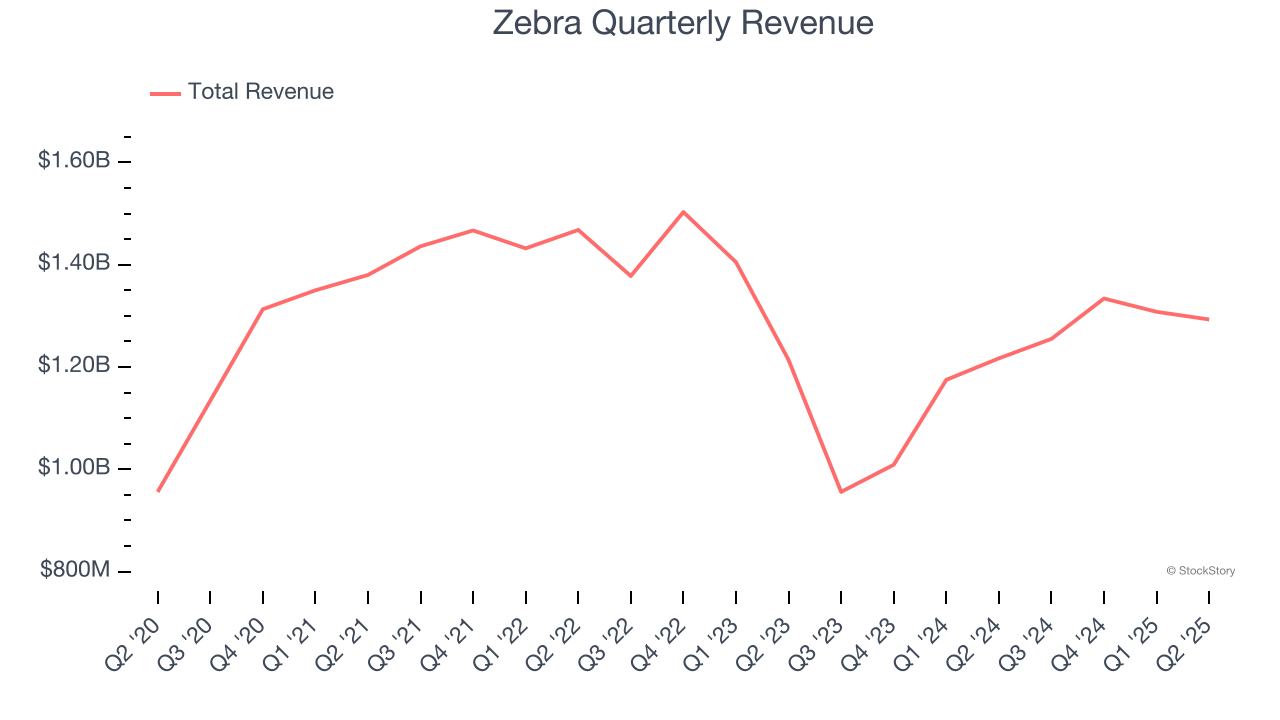
We at StockStory place the most emphasis on long-term growth, but within business services, a half-decade historical view may miss recent innovations or disruptive industry trends. Zebra’s performance shows it grew in the past but relinquished its gains over the last two years, as its revenue fell by 2.9% annually. 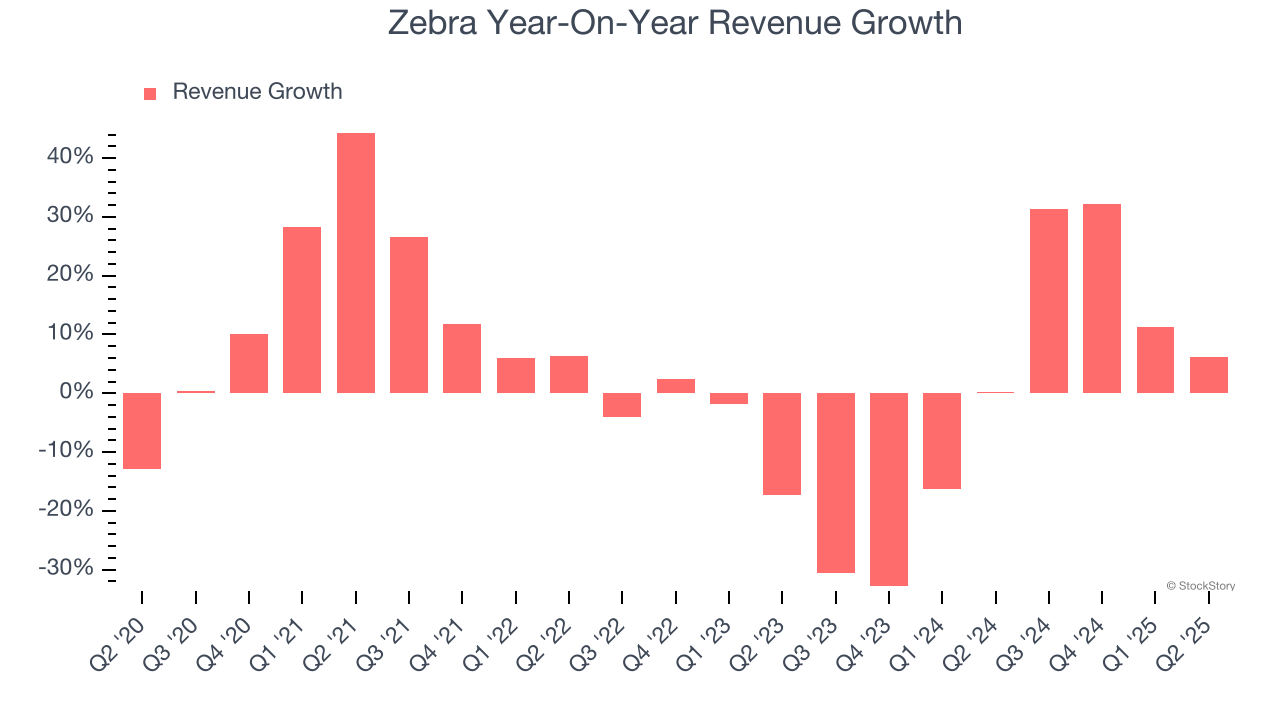
We can better understand the company’s sales dynamics by analyzing its organic revenue, which strips out one-time events like acquisitions and currency fluctuations that don’t accurately reflect its fundamentals. Over the last two years, Zebra’s organic revenue was flat. Because this number is better than its two-year revenue growth, we can see that some mixture of divestitures and foreign exchange rates dampened its headline results. 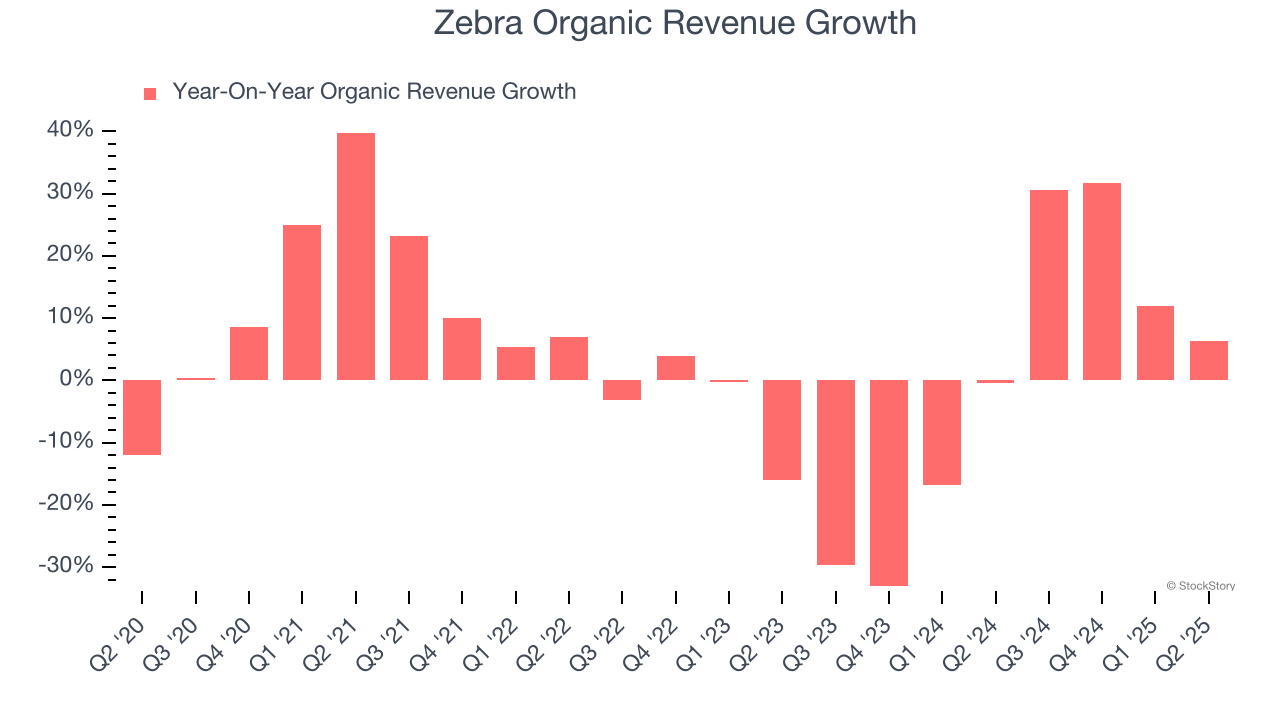
This quarter, Zebra grew its revenue by 6.2% year on year, and its $1.29 billion of revenue was in line with Wall Street’s estimates. Company management is currently guiding for a 4% year-on-year increase in sales next quarter.
Looking further ahead, sell-side analysts expect revenue to grow 3.7% over the next 12 months. Although this projection implies its newer products and services will catalyze better top-line performance, it is still below average for the sector.
Here at StockStory, we certainly understand the potential of thematic investing. Diverse winners from Microsoft (MSFT) to Alphabet (GOOG), Coca-Cola (KO) to Monster Beverage (MNST) could all have been identified as promising growth stories with a megatrend driving the growth. So, in that spirit, we’ve identified a relatively under-the-radar profitable growth stock benefiting from the rise of AI, available to you FREE via this link.
Operating Margin
Zebra has managed its cost base well over the last five years. It demonstrated solid profitability for a business services business, producing an average operating margin of 13.4%.
Looking at the trend in its profitability, Zebra’s operating margin decreased by 2.1 percentage points over the last five years. This raises questions about the company’s expense base because its revenue growth should have given it leverage on its fixed costs, resulting in better economies of scale and profitability.
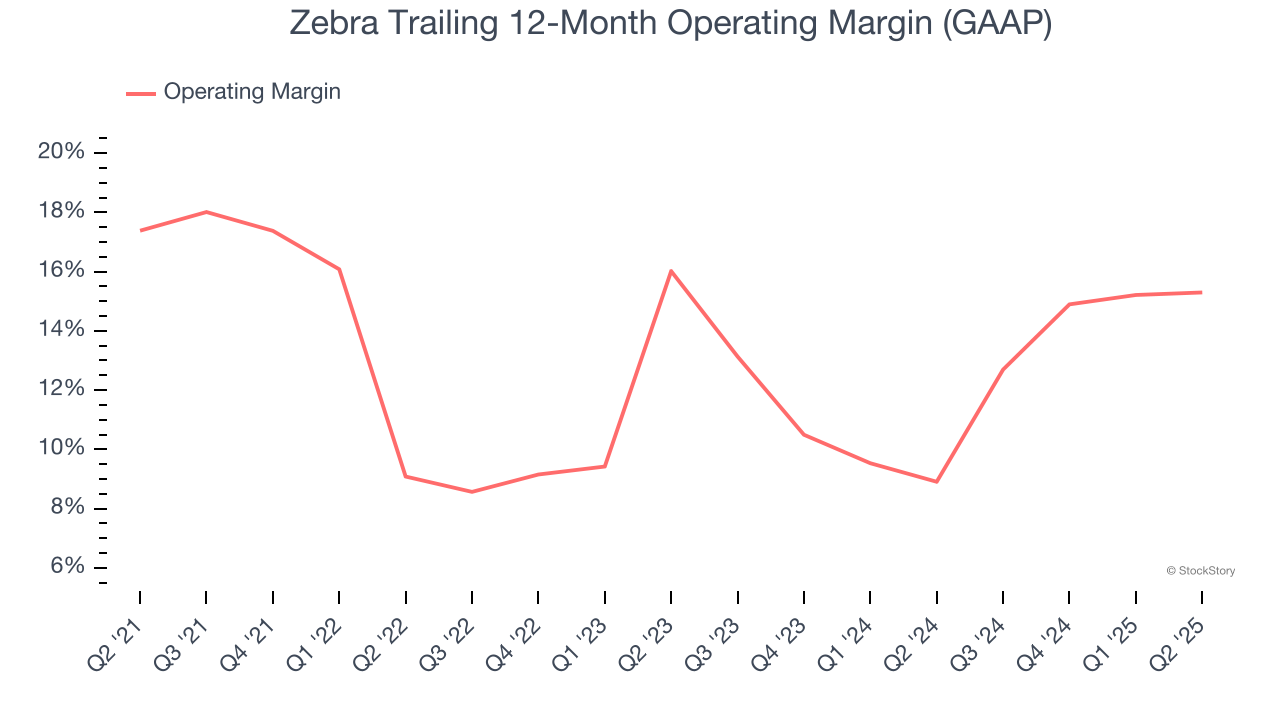
This quarter, Zebra generated an operating margin profit margin of 14.2%, in line with the same quarter last year. This indicates the company’s overall cost structure has been relatively stable.
Earnings Per Share
We track the long-term change in earnings per share (EPS) for the same reason as long-term revenue growth. Compared to revenue, however, EPS highlights whether a company’s growth is profitable.
Zebra’s unimpressive 4.6% annual EPS growth over the last five years aligns with its revenue performance. On the bright side, this tells us its incremental sales were profitable.
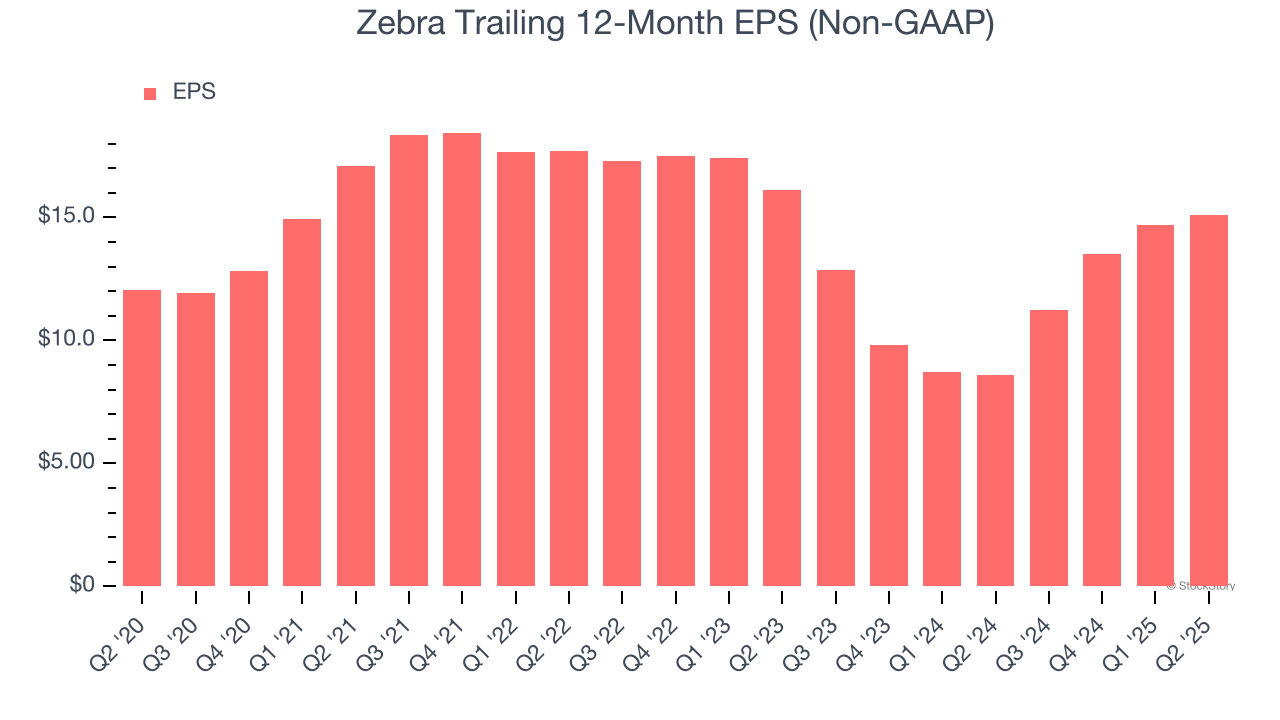
Like with revenue, we analyze EPS over a shorter period to see if we are missing a change in the business.
For Zebra, its two-year annual EPS declines of 3.1% show it’s continued to underperform. These results were bad no matter how you slice the data.
In Q2, Zebra reported adjusted EPS at $3.61, up from $3.18 in the same quarter last year. This print beat analysts’ estimates by 8.4%. Over the next 12 months, Wall Street expects Zebra’s full-year EPS of $15.12 to stay about the same.
Key Takeaways from Zebra’s Q2 Results
We were impressed by how significantly Zebra blew past analysts’ EPS guidance for next quarter expectations this quarter. We were also excited its full-year EPS guidance outperformed Wall Street’s estimates by a wide margin. Zooming out, we think this was a good print with some key areas of upside. The stock traded up 6.6% to $365 immediately after reporting.
Zebra put up rock-solid earnings, but one quarter doesn’t necessarily make the stock a buy. Let’s see if this is a good investment. If you’re making that decision, you should consider the bigger picture of valuation, business qualities, as well as the latest earnings. We cover that in our actionable full research report which you can read here, it’s free.




